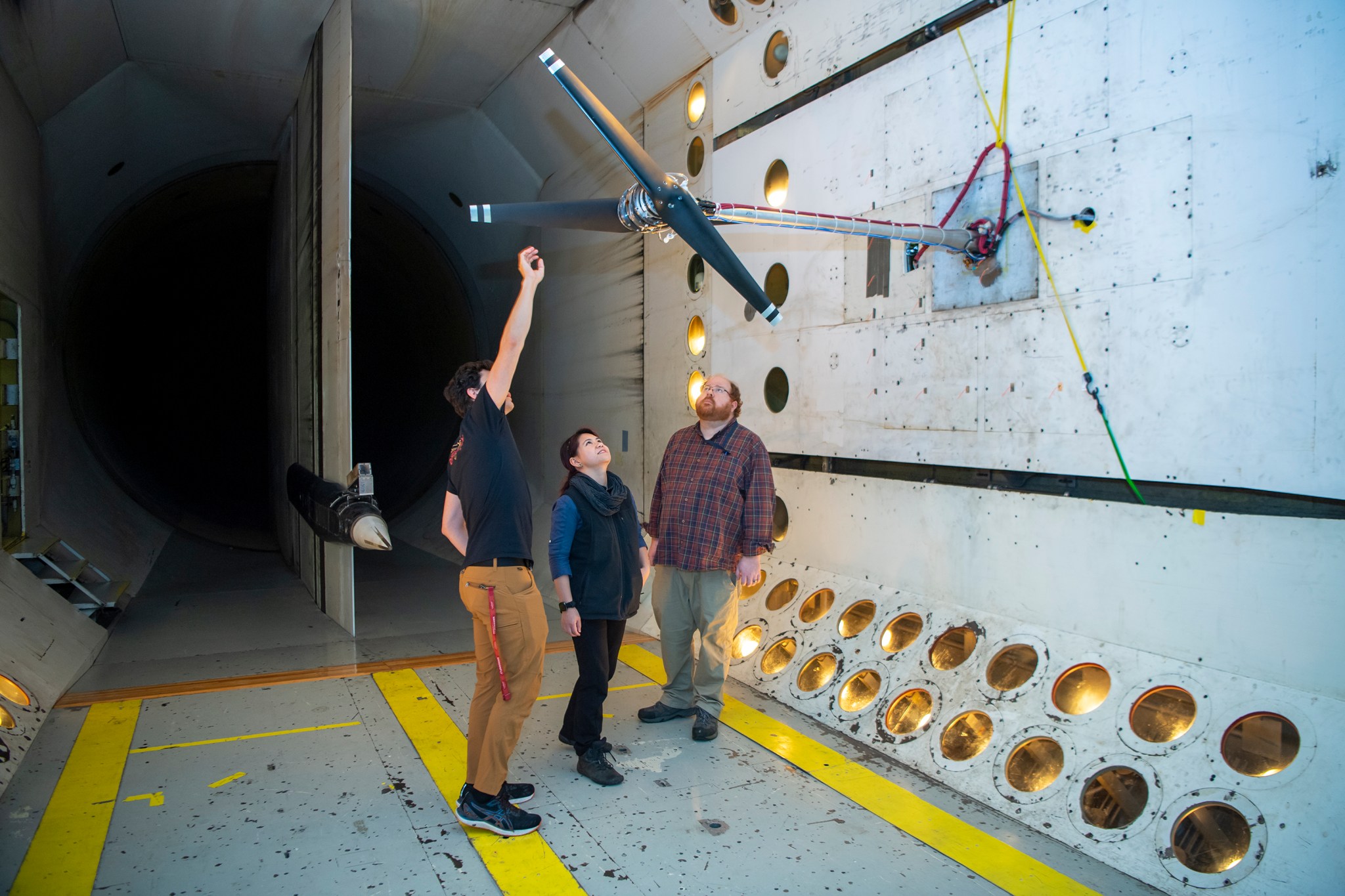NASA explores the unknown in space, bringing the secrets of our solar system home so we can apply that information for the benefit of humanity. In that spirit, NASA will explore Titan, Saturn’s largest moon, to help advance humanity’s search for the building blocks of life in the universe.
A key component of the 8-rotor Dragonfly vehicle that will make that journey to Titan recently underwent testing at the Transonic Dynamics Tunnel (TDT) at NASA’s Langley Research Center in Hampton, Virginia.
Similar to a drone, Dragonfly will traverse Titan’s dense, nitrogen-rich atmosphere, then land on, sample and examine various sites. Dragonfly will have four pairs of rotors, each with two rotors in coaxial configuration, meaning one rotor above the other. It’s similar to, but significantly larger than, a typical terrestrial drone, as the vehicle is over 12 feet both nose to tail and at the widest points, rotor tip-to-tip.
Researchers at Langley and from the Johns Hopkins Applied Physics Laboratory (APL) conducted a number of tests on a coaxial pair of rotors at the TDT meant to validate computer models. The large test section enabled the use of full scale flight representative hardware, and the ability to fill the tunnel with heavy gas allowed the hardware to be tested at Titan-representative aerodynamic loads.
Researchers simulated expected conditions for hover, descent and climb, and assessed aerodynamic loads for each rotor at a variety of wind speeds, rotor shaft angles and rotor throttle settings. Researchers also conducted tests with one rotor operating and the other stationary to assess failure modes. Sensors and accelerometers on the test article measured the loads and accelerations created by each rotor under various wind speeds, orientations and rotor speeds. Preliminary analysis of the data indicates that CFD predictions of rotor performance and power requirements are valid, and similar predictions for operation on Titan are within expected mission tolerances.
“The testing at this one-of-a-kind facility was a crucial early step toward bringing this exciting mission to fruition,” said Richard Heisler, wind tunnel test lead for Dragonfly at APL, which is designing and building the rotorcraft and manages the mission for NASA. “The data we collected at the TDT will give us a much clearer picture of how we can expect Dragonfly’s rotors to perform in Titan’s alien atmosphere.”
Dragonfly is scheduled to launch in 2027 and reach Titan by 2034, when it will begin a what is expected to be a 3-year mission to explore and shed light on the complex chemistry on the exotic moon and ocean world. It was selected in June 2019 as part of NASA’s New Frontiers program, which includes the New Horizons mission to Pluto and the Kuiper Belt, Juno to Jupiter, and OSIRIS-REx to the asteroid Bennu. Dragonfly is led by Principal Investigator Elizabeth Turtle at APL, which is located in Laurel, Maryland.




























